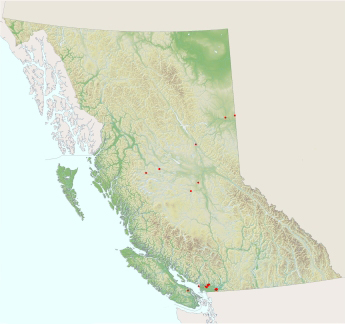Medium-sized dragonflies most often seen around lakes, boggy streams and peatlands in the mountains or in the north. Of 16 species in our region, 13 have Northern or Beringian ranges. The eyes, often brilliant green, meet broadly on top of the head. The shape of the anal loop in the hindwing is distinctive. Adults seldom perch during feeding and males frequently hover when patrolling for mates; when resting, they normally hang vertically or obliquely from vegetation. In flight, a male frequently arches its abdomen, which is often narrower at the base and tip. Larvae are usually squat and rather hairy; they sprawl in the mud and detritus in the bottom of the waters where they live.
|
Rare inhabitant of marshy lakeshores, boggy ponds and backwaters of slowly flowing streams. A spring and early summer species.
|
|
